
Featured
„Der Krebs ist zurück, ich bin schwanger und kämpfe dieses Mal nicht allein“, postet Katrin auf Social Media. Auf dem Foto hält sie ihren Mutterpass und einen Therapiepass in den Händen. Katrin ist 39 Jahre alt, als sie nahezu zeitgleich erfährt, dass sie zum zweiten Mal an Brustkrebs erkrankt ist und außerdem ein Baby erwartet. Unfassbares Glück und bittere Angst könnten dichter nicht beieinander liegen. Doch Aufgeben kommt für Katrin nicht in Frage. Sie nimmt ihr Schicksal mutig an und kämpft dieses Mal gleich für zwei.
Wie ist es möglich, eine solche Hiobsbotschaft überhaupt zu verkraften? Wie soll das gehen, Krebstherapie und Schwangerschaft gleichzeitig? Kann Katrin unter diesen Umständen überhaupt ein gesundes Baby zur Welt bringen? Für Katrin und ihren französischen Ehemann Quentin beginnt eine Zeit des Bangens. Während andere werdende Eltern die Schwangerschaft genießen können, bleibt für sie wenig Raum für Babyglück. Eine Operation, die Chemotherapie mit all ihren Nebenwirkungen, ständige Kontrolluntersuchungen – und über allem schwebt die Frage „Wie geht es dem Baby damit?“.
Einen Monat vor dem errechneten Termin steigt die Aufregung. Das Baby soll nun schon zur Welt kommen, denn Katrin muss schnell weiterbehandelt werden. Die Bestrahlung kann erst nach der Geburt beginnen. Außerdem stehen dringende Untersuchungen an, die die Ärzte und Ärztinnen nicht während einer Schwangerschaft riskieren wollen, denn sie könnten dem ungeborenen Baby schaden. Nur so kann Katrin Gewissheit bekommen: Was ist mit ihrer eigenen Gesundheit? Wie steht es wirklich um sie? Hat der Krebs etwa gestreut?
Tatsächlich erhält eine von tausend Frauen während der Schwangerschaft eine Krebsdiagnose. Katrin hat sich deshalb bewusst entschieden, ihre Geschichte mit anderen zu teilen und sich nicht mehr – wie bei ihrer ersten Krebserkrankung – zu verstecken. Sie möchte damit anderen Frauen Mut machen, die Ähnliches durchstehen müssen. Mit unglaublicher Kraft und noch mehr positiver Energie begegnet Katrin allen Widrigkeiten, erlebt Höhen und Tiefen zwischen Krebspatientin und Mutter sein – immer an ihrer Seite ihr Ehemann Quentin. Gemeinsam möchten sie die schönen Momente genießen und die bösen Gedanken möglichst gar nicht erst aufkommen lassen. Das Baby ist ihr persönliches Wunder. Ein Film über eine eindrucksvolle Frau, die ihr besonderes Schicksal annimmt und für zwei Leben kämpft.
| Broadcast date: | 7. Juni 2023 um 23.35 Uhr in der ARD + 21. Juni 2023 um 22.00 Uhr im rbb |
| Length: | 30' |
| Written and directed by: | Britta Thein & Andrea Wiehager-Philippi |
| Recherche: Christina Rech | |
| Camera: | Patrick Waldmann |
| Editor: | Maren Großmann |
| Editorial advisor: | Ulrike Bieritz (rbb), Susanne Sturm (mdr) |
| Production: | Guillaume Amouret, Flemming Becker, Christin Gumpert, Nele Joka |
| Executive producer: | Heike Dickebohm |
| Producer: | Jasmin Gravenhorst |
Das älteste Großatelier-Filmstudio der Welt steht nicht in Hollywood, sondern in Potsdam Babelsberg. Es ist bis heute das größte Filmstudio Europas. Seit 1912 wurden hier mehr als viertausend Filme produziert. Namhafte Regisseurinnen und Regisseure, Schauspielerinnen und Schauspieler haben hier gewirkt und nationale, wie internationale Filmklassiker geschaffen, darunter Kultfilme wie „Metropolis“ oder „Der Blaue Engel“. Ob in den Filmstudios Babelsberg oder ihren historischen Vorläufern Decla Bioscop, Ufa und Defa: Die Filmgeschichte Babelsberg spiegelt immer auch deutsche Geschichte wider.
| Broadcast date: | 4. November 2023 um 20.15 Uhr auf 3sat |
| Length: | 45' |
| Written and directed by: | Nadja Kölling |
| Moderation: | Wladimir Kaminer |
| Camera: | Sami Karim, Bastian Baumöller |
| Editor: | Christian Brehm |
| Editorial advisor: | Bettina Gräfin von Pfeil (ZDF/3sat) |
| Production: | Guillaume Amouret, Flemming Becker, Christin Gumpert |
| Line producer: | Nele Joka |
| Producer: | Jasmin Gravenhorst |
| Filming location: | Potsdam |
Sie waren die Galionsfiguren der Friedensbewegung und der Grünen, sie waren DAS Politikerpaar der Achtzigerjahre: Petra Kelly und Gert Bastian. Sie wirkten unzertrennlich – bis beide 1992 erschossen in ihrem Bonner Reihenhaus gefunden werden, erst Wochen nach ihrem Tod.
Fridays for Future, der weltweite Klimadiskurs, Annalena Baerbock als designierte Außenministerin – alles ist mit einem unsichtbaren Band verbunden mit einer Frau, die als Grüne, Feministin, Anti-Atom- und Friedensaktivistin genau dafür in den 1980er Jahren den Grundstein legte, die weltweit berühmt wurde und so tragisch endete: Petra Kelly. In ihrem Geiste lassen sich all diese Entwicklungen sehen und umso virulenter wird die Frage: Wer war diese Frau und wie konnte es zu dem frühen Tod der gerade einmal 44-jährigen Visionärin kommen?
| Broadcast date: | 1. Oktober 2022 ab 20.15 Uhr auf SKY crime |
| Length: | 3 x 45' |
| Author: | Anna Grün |
| Szenische Regie: Birgit Tanner | |
| Camera: | Jürgen Rehberg |
| Editor: | Marcel Ozan Riedel |
| Editorial advisor: | Marietta Gottfried (SKY), Christian Asanger (SKY) |
| Production: | Guillaume Amouret, Christin Gumpert, Nele Joka |
| Producer: | Elisa Frankenstein |
| Executive producer: | Anna Grün, Ulrike Schwerdtner |
| Producer: | Jasmin Gravenhorst |
Productions
Große Tiere sind die Hauptdarsteller in einem skurrilen Wettkampf nach dem Zweiten Weltkrieg in Berlin. Der „Zoologische Garten“ in West-Berlin, ältester Zoo Deutschlands, bekommt plötzlich Konkurrenz aus dem Osten. Die neu gegründete DDR eröffnet 1955 einen „Gegen-Zoo“ in Ost-Berlin. Es geht um Elefanten, Nashörner und die Frage, welches politische System das bessere ist. Die beiden Direktoren ziehen alle Register, um sich gegenseitig auszustechen. Mit Filmmaterial aus den Archiven des BRD- und DDR-Fernsehens und Zeitzeugeninterviews ist dieser Film eine amüsante Zeitreise an einen tierischen Nebenschauplatz des Kalten Krieges.
| Broadcast date: | 1. August 2024 um 20.15 Uhr auf arte |
| Length: | 45' |
| Written and directed by: | Heike Nikolaus |
| Camera: | Felix Greif |
| Editor: | Maren Großmann |
| Editorial advisor: | Petra Boden (ZDF/arte) |
| Production: | Guillaume Amouret, Flemming Becker, Christin Gumpert |
| Line producer: | Nele Joka |
| Producer: | Brigitta Schübeler |
| Producer: | Jasmin Gravenhorst |
370 Kilometer schlängelt sich der Shannon von den nebligen Mooren im Norden Irlands zum tosenden Atlantik im Südwesten. Es ist eine gemächliche Reise, vorbei an uralten Klostersiedlungen und herrschaftlichen Schlössern, durch weite Seen und kleine Städtchen. Im Sommer sind Freizeitkapitäne in Hausbooten auf dem größten Fluss der Insel anzutreffen, ansonsten herrscht in der Mitte Irlands wenig Trubel.
Der Film folgt dem Flusslauf von der Quelle bis zur Mündung, begleitet Ökologinnen bei der Renaturierung des Moors, eine Gräfin auf der Suche nach Heizungslecks im klammen Schloss, eine junge Musikerin in Limerick bei einem Gig im Pub und ein Team Delfinforscher, die in der Mündung des Shannon ein frisch geborenes Tümmlerkalb suchen.
| Broadcast date: | 16. September 2024 um 17.45 Uhr auf arte |
| Length: | 45' |
| Written and directed by: | Cristina Trebbi |
| Camera: | Julian Ringer |
| Editor: | Maren Großmann |
| Editorial advisor: | Silvia Gutmann (NDR) |
| Production: | Guillaume Amouret, Flemming Becker, Christin Gumpert |
| Line producer: | Nele Joka |
| Executive producer: | Brigitta Schübeler |
| Producer: | Jasmin Gravenhorst |
| Filming location: | Irland |
Schlesien – mitten in Europa gelegen und voller Überraschungen. Eine Kulturlandschaft mit bewegter Geschichte, prachtvollen Metropolen, Wäldern, in denen magische Wesen umhergeistern, Gipfeln mit sagenhaften Aussichten und Landschaften, die verzaubern.
Folge 1: Am Fuße der Schneekoppe
„arte Entdeckungen“ erklimmt die Wetterstation auf der Schneekoppe im Riesengebirge, erlebt den schlesischen Fujiyama im „Land der erloschenen Vulkane“ und staunt über die Schönheit der Stadt Wroclaw, dem früheren Breslau. Wir treffen Menschen, die sich leidenschaftlich um seltene Pflanzen und die polnischen Urpferde kümmern. Und wir sind dabei, wie eine Müllerfamilie mit uralten Maschinen feinstes Bio-Mehl produziert.
Sendetermin: Donnerstag, 13. Juni 2024 um 18.35 Uhr auf arte
Whd. am 17.6.24 um 10.30 Uhr
Folge 2: An den Ufern der Oder
Wir lassen uns den Oderstrom entlangtreiben, erleben die fröhliche Hektik in einer romantischen Berghütte im Eulengebirge und klettern mit Forschern und Forscherinnen hinab in die Tropfsteinhöhlen des Krakau-Tschenstochauer-Juras. Wir schauen leidenschaftlichen Weinbauern über die Schulter, erleben die schlesische Handwerkskunst der Korbflechterei und begleiten Wildtierretter*innen bei der Auswilderung von Falken, Rehen, Enten und Igeln.
Sendetermin: Freitag, 14. Juni 2024 um 18.35 Uhr auf arte
Whd. am 17.6.24 um 11.15 Uhr
| Broadcast date: | 13. und 14. Juni 2024 um 18.35 Uhr auf arte |
| Length: | 2x 45' |
| Written and directed by: | Till Lehmann |
| Mitarbeit: Matylda Rosinska | |
| Camera: | Ralf Biehler |
| Editor: | Maren Großmann |
| Editorial advisor: | Petra Boden (ZDF/arte) |
| Production: | Guillaume Amouret, Flemming Becker, Christin Gumpert |
| Line producer: | Nele Joka |
| Executive producer: | Brigitta Schübeler |
| Producer: | Jasmin Gravenhorst |
| Filming location: | Polen |
Es ist wohl das bekannteste MeToo-Verbrechen der barocken Kunstwelt. Das Opfer ist die erst achtzehnjährige Malerin Artemisia Gentileschi. Der Täter: Ein bekannter Künstlerkollege von Artemisias Vater. „Gewaltsam entjungfert und mehrfach fleischlich erkannt“, so präzise wie den Tatvorwurf haben römische Gerichtsbedienstete im März 1612 den gesamte Prozessverlauf protokolliert.
| Broadcast date: | in 2024 auf arte |
| Length: | 52' |
| Written and directed by: | Sabine Bier & Anne Wigger |
| Camera: | Reiner Bauer, Steffen Bohn, Matt Gallaher, Marcus Lehmann, Jovica Nonkovic |
| Editor: | Sigrid Sveistrup |
| Editorial advisor: | Peter Allenbacher (ZDF/arte) |
| Production: | Guillaume Amouret, Flemming Becker, Christin Gumpert |
| Line producer: | Nele Joka |
| Producer: | Jasmin Gravenhorst |
Angriffe auf Einsatzkräfte, Innenstadt-Krawalle oder Schulhofschlägereien. Gewalt von Jugendlichen ist an der Tagesordnung. Wie kann es gelingen, die Gewaltspirale zu stoppen?
Nach Diebstahl ist Körperverletzung das zweithäufigste Delikt von 14- bis 21-Jährigen. Gefilmt und online verbreitet, erreicht die Gewalt ein neues Level. Mit unkonventionellen Methoden gehen Macherinnen und Macher gegen die Verrohung an.
| Broadcast date: | 23. März 2024 und 17:35 Uhr im ZDF |
| Length: | 30 Minuten |
| Written and directed by: | Christian Bock |
| Camera: | Clarissa Crasemann, Moritz Schwarz, Roland Wagner |
| Editor: | Marion Pohlschmidt |
| Editorial advisor: | Annette Hoth (ZDF), Steffen Beyer (ZDF) |
| Production: | Guillaume Amouret, Flemming Becker, Christin Gumpert |
| Line producer: | Nele Joka |
| Producer: | Christina Rech |
| Producer: | Jasmin Gravenhorst |
Rund ein Viertel der Kinder und Jugendlichen in Deutschland sind von Armut bedroht. Jeder Schritt nach vorn ist ein Kraftakt: Viele schaffen es nur mit Unterstützung ihren Alltag zu bestehen.
Ob Schulsorgen, kein Geld für Klamotten, Miete, Hobby oder Urlaub: Die Probleme sind vielfältig und nicht immer gibt es eine Lösung. Doch Luisa, Angie, Hector und Davin kämpfen, für eine Zukunft ohne Geldnot. 37 Grad begleitet drei Familien in ihrem kräftezehrenden Alltag mit wenig Geld.
Luisa, Angie, Hector, Davin und ihre Geschwister verfolgen ein Ziel: Sie wollen einen Schulabschluss und eine Ausbildung, sie möchten nicht ständig aufs Geld achten müssen. Dabei brauchen sie Unterstützung von außen, von Ämtern, Hilfsorganisationen, von Geistlichen. Der Film zeigt, wie mühsam und wichtig es für diese Kinder und Jugendlichen ist, sich aus der Armutsspirale zu befreien.
| Broadcast date: | 27. Februar 2024 um 22.15 Uhr im ZDF |
| Length: | 30' |
| Written and directed by: | Heike Dickebohm |
| Camera: | Oliver Gurr, Patrick Waldmann, Jasper Granderath, Philip Koepsell, Roland Wagner |
| Editor: | Sigrid Sveistrup |
| Editorial advisor: | Ulrike Schenk (ZDF) |
| Production: | Guillaume Amouret, Flemming Becker, Christin Gumpert |
| Line producer: | Nele Joka |
| Executive producer: | Brigitta Schübeler |
| Producer: | Jasmin Gravenhorst |
Schlechtes Wetter, hohe Industrialisierung, seltsamer Dialekt und Mentalität – der Norden Frankreichs hat gegen Vorurteile zu kämpfen, über die man sich gern lustig macht. Nicht umsonst ist die Komödie „Willkommen bei den Sch’tis“, in der ein Postbeamter aus Südfrankreich in den Norden zwangsversetzt wird, der erfolgreichste Kinofilm Frankreichs.
Dabei hat Nordfrankreich zwischen Belgien und dem Ärmelkanal viel mehr zu bieten. Es ist eine reiche Region mit einer atemberaubenden Küste und einer vielfältigen Landschafts- und Tierwelt. Die Bucht der Somme ist eine der schönsten Buchten der Welt und Mekka für Ornithologen und Ornothologinnen, weil hier Tausende von Zugvögeln Rast machen. Dazu kommt die Picardie mit ihren wunderbaren Waldgebieten, wilden Mooren und Schlössern. Und die Region bemüht sich stark um Nachhaltigkeit und Innovation.
Wir besuchen die langen Strände und mondänen Badeorte der Opalküste. Am Plage de Portel treffen wir die letzte Zu-Fuß-Fischerin Frankreichs, im Naturschutzgebiet der Baie de Somme besuchen wir die größte Robben-Kolonie Frankreichs und treffen engagierte Ornithologinnen und Ornithologen. Wir erfahren im Wald von Compiègne, was „Sylvotherapie“ ist, treffen preisgekrönte Fromagiers in der Zitadelle von Arras und eine Pferdezüchterin, die das typische Pferd der Picardie züchtet: das Cheval de Henson. Eine spannende Reise in einen lang unterschätzten Teil Frankreichs.
Montag, 5. Februar 2024 auf arte
17.50 Uhr: “Die Baie de Somme und die Opalküste”
18.35 Uhr: “Von der Somme nach Flandern”
Wiederholungen: am 8. Februar 2024 um 10.26 Uhr und 11.10 Uhr
| Broadcast date: | Montag, 5. Februar 2024 ab 17.50 Uhr auf arte |
| Length: | 2 x 52' |
| Written and directed by: | Susanne Utzt |
| Camera: | Alexander Hein |
| Editor: | Maren Großmann |
| Editorial advisor: | Petra Boden (ZDF) |
| Production: | Guillaume Amouret, Flemming Becker, Christin Gumpert |
| Line producer: | Nele Joka |
| Producer: | Jasmin Gravenhorst |
Moderne Möbel aus Müll – mit dieser Mission will eine dänische Firma den Möbelmarkt umkrempeln. Aber auch Möbel mieten ist eine Alternative zu unserer Wegwerfgesellschaft.
Jedes Jahr landen 50 Millionen Möbelstücke auf dem Sperrmüll. Und das bei immer knapper werdenden Ressourcen. Ein Grund umzudenken. Plan b zeigt Visionäre und Visionärinnen, die nachhaltige Möbel herstellen oder vermieten. Immer mit dem Ziel vor Augen, eine Kreislaufwirtschaft anzukurbeln.
| Broadcast date: | 20. Januar 2024 "plan b" um 17:35 Uhr im ZDF (vorab: 19. Januar 2024 um 19.40 Uhr auf arte re:) |
| Length: | 30' |
| Written and directed by: | Kristina Klasen |
| Camera: | Björn Lindenblatt, Reiner Bauer |
| Editor: | Elisabeth Hirsch |
| Editorial advisor: | Grit Cross (ZDF) |
| Production: | Guillaume Amouret, Flemming Becker, Christin Gumpert |
| Line producer: | Nele Joka |
| Executive producer: | Brigitta Schübeler |
| Producer: | Jasmin Gravenhorst |
„Der Krebs ist zurück, ich bin schwanger und kämpfe dieses Mal nicht allein“, postet Katrin 2022 auf Social Media. Auf dem Foto hält sie damals ihren Mutterpass und einen Therapiepass in den Händen.
Mit 39 Jahren erfährt Katrin fast zeitgleich, dass sie zum zweiten Mal an Brustkrebs erkrankt ist und ein Baby erwartet. Ihr Traum vom Leben mit einer eigenen Familie scheint zu platzen. Doch gemeinsam mit Ehemann Quentin trifft sie eine Entscheidung: Sie möchten ihr Baby behalten.
Katrin lässt sich operieren und macht eine Chemotherapie, aber die Angst um das ungeborene Baby bleibt ihr ständiger Begleiter: Kann sie überhaupt ein gesundes Kind zur Welt bringen? Riskiert sie zu viel? Erst nach der Geburt wird sie erfahren, ob der Krebs gestreut hat.
Katrin bringt tatsächlich eine gesunde Tochter zur Welt. Statt Wochenbett muss sie jetzt aber selbst schnell zur Bestrahlung und der Spagat zwischen Therapie und Mamasein ist mühsam. Aber das Babyglück macht ihr Mut. Jetzt wollen sie und ihr französischer Mann sogar ihren Traum vom eigenen Haus in Frankreich wahrmachen. Wenn da nur nicht diese Angst wäre, dass der Krebs zurückkommt.
Etwa eine von tausend Schwangeren erhält die Diagnose Krebs. Diese seltene Kombination ist mittlerweile medizinisch nicht mehr aussichtslos. Katrin nimmt dieses Schicksal an und kämpft mit viel positiver Energie für zwei Leben. Ein Jahr lang hat Menschen Hautnah die kleine Familie auf ihrem Weg begleitet.
| Broadcast date: | 14. Dezember 2023 um 22.45 Uhr im WDR |
| Length: | 45' |
| Written and directed by: | Britta Thein und Andrea Wiehager-Philippi |
| Camera: | Patrick Waldmann |
| Editor: | Maren Großmann, Ramon Urselmann |
| Editorial advisor: | Angelika Wagner (WDR), Ulrike Bieritz (rbb), Susanne Sturm (MDR) |
| Production: | Guillaume Amouret, Flemming Becker, Christin Gumpert |
| Line producer: | Nele Joka |
| Producer: | Renate Werner (WDR) |
| Executive producer: | Heike Dickebohm |
| Producer: | Jasmin Gravenhorst |
Palmen, Monsteras, Orchideen – exotische Zimmerpflanzen liegen im Trend. Was grün aussieht, ist oft wenig nachhaltig. Aber erste Pionier*innen kämpfen für mehr Umweltschutz im Blumentopf.
Die grünen Dschungelpflanzen in den Wohnungen der Millennials erzählen von ihrem Wunsch nach Naturverbundenheit und einer gesunden Umgebung. Doch die meisten Zimmerpflanzen werden billig mit viel Chemie in Afrika, Asien oder Südamerika produziert.
Pro Jahr werden rund 100 Millionen Zimmerpflanzen in Deutschland verkauft. Weniger als 2 Prozent werden nach ökologischen Kriterien produziert. Klaus Bongartz will das ändern. Als Berater für Bioanbau setzt er sich unermüdlich für echte Nachhaltigkeit bei der Produktion von Pflanzen ein. Seit einigen Jahren berät er die Brüder Stefan und Achim Fleischle, die in Baden-Württemberg tropische Grünpflanzen züchten. In ihrem Gartenbaubetrieb setzen sie inzwischen Nützlinge statt Pestizide ein, verzichten auf synthetische Dünger und suchen sich Partner*innen in Mittelamerika, die bereit sind auf Chemie zu verzichten. „Das funktioniert aber nur, wenn der Handel und die Verbraucher auch mitziehen“, meint Bongartz.
Schon in ihrer Kindheit hat Marei Karge das Orchideenfieber gepackt. Die 42-jährige ist Gärtnerin in vierter Generation. Sie findet, gerade Orchideenzüchter*innen haben eine besondere Verantwortung für den Artenschutz. „Schließlich haben wir Europäer im 19. Jahrhundert die Pflanzen auf fernen Kontinenten geplündert“. Marei Karge möchte deshalb die Heimat der Orchideen, die durch Abholzung bedrohten Regenwälder, schützen. In Borneo unterstützt sie ein einzigartiges Projekt. Sie begleitet ein Team vor Ort, das zerstörte Wälder wieder aufforstet und hilft selber mit beim setzen junger Pflanzen. Kahlschläge und Palmölplantagen bedrohen die über 1000 Orchideenarten, die hier heimisch sind. Aber die Aufforstung soll auch den Lebensraum der gefährdeten Borneo-Orang-Utans sichern und den Klimawandel aufhalten. Denn Bäume sind wichtige CO2 Speicher. Außerdem will Marei Karge Kontakte zu einem staatlichen Orchideenlabor knüpfen. Könnte man nicht gemeinsam eine nachhaltige Orchideenzucht aufbauen?
„Warum denkt bei Zimmerpflanzen eigentlich niemand an Plastikmüll“, fragen sich die beiden jungen Unternehmer Ozan Durukan und Thomas Gardeia aus Oberfranken. Schließlich fallen beim Kauf von Pflanzen gigantische Mengen an Plastiktöpfen an. Um das zu ändern, haben sie einen kompostierbaren Topf aus der Naturfaser Hanf entwickelt. Einziger Wermutstropfen ist der höhere Preis. Aber Umweltschutz gibt es eben nicht zum Nulltarif.
| Broadcast date: | Wiederholung am 20. März 2024 um 17.35 Uhr im ZDF |
| Length: | 30' |
| Written and directed by: | Angela Scheele |
| Camera: | Tim Bräutigam, Steve Kfoury, Johannes Straub |
| Editor: | Rainer Wolf |
| Editorial advisor: | Sina Schwerdt (ZDF), Christian Dezer (ZDF) |
| Production: | Guillaume Amouret, Christin Gumpert, Nele Joka |
| Line producer: | Ulrike Schwerdtner |
| Executive producer: | Anna Grün |
| Producer: | Jasmin Gravenhorst |
Neuste Erkenntnisse der Forschung zeigen: Salz birgt für unsere Zukunft sowohl Chancen als auch Risiken. Die zunehmende Versalzung unseres kostbaren Süßwassers versetzt Wissenschaftler*innen weltweit in Aufruhr. Mit Blick auf den Kampf gegen den Klimawandel könnte Salz wiederum bei der Entwicklung grüner Energiegewinnung und alternativer Baustoffe eine zentrale Rolle spielen.
Noch vor wenigen Jahrhunderten als “weißes Gold” gehandelt, ist Salz heute zu einem unverzichtbaren Massenprodukt geworden. Geschätzte 290 Millionen Tonnen Salz werden im Jahr weltweit produziert und verarbeitet. Längst dient das Salz nicht mehr nur als Würz- oder Konservierungsstoff für Lebensmittel. Einen Großteil verbraucht die chemische Industrie, wo das Salz zur Herstellung von Produkten wie Wasch- und Reinigungsmitteln zum Einsatz kommt. An anderer Stelle kreiert das “weiße Gold” aber auch Probleme. Bei der Produktion von Dünger entstehen große Mengen an Salzabfall, die Mensch und Umwelt belasten. Forscher*innen haben das Abfallprodukt Salz jedoch ins Visier genommen und suchen nach nachhaltigen Lösungen, wie es als wertvolles Baumaterial verwendet werden kann. Parallel dazu sehen Ingenieur*innen und Wissenschaftler*innen im Salz ein Potential, wenn es um die Entwicklung grüner Energie geht. Denn schon bald soll unser Strom nahezu vollständig aus erneuerbaren Quellen kommen. Was fehlt sind effiziente und kostengünstige Speichersysteme. Hier könnte Salz als Lösung dienen und den Weg in eine klimaneutrale Zukunft ebnen. Doch während Salz in manchen Bereichen als Segen erscheint, bleibt es zugleich eine Herausforderung für die Erhaltung unserer kostbaren Süßwasserressourcen. Von der Öffentlichkeit nahezu unbemerkt, gefährdet die Versalzung wertvoller Süßwasservorkommen unsere Zukunft. Die Zeit drängt, um diese lebenswichtige Ressource langfristig zu sichern.
| Broadcast date: | 2. Dezember 2023 um 22.55 Uhr auf arte |
| Length: | 52' |
| Written and directed by: | Elisa Frankenstein |
| Camera: | Sebastian Unger, Denis Lüthi, René Schröter |
| Editor: | Rainer Wolf |
| Editorial advisor: | Marita Hübinger (ZDF/arte) |
| Production: | Guillaume Amouret, Flemming Becker, Christin Gumpert |
| Line producer: | Nele Joka |
| Executive producer: | Brigitta Schübeler |
| Producer: | Jasmin Gravenhorst |
| Filming location: | Frankreich, Niederlande, Deutschland |
Sandstrand vor der Tür, abenteuerlicher Regenwald, überraschende Leckerbissen und über allem Salsa – das ist Puerto Rico. Salsa hat auf der kleinsten Insel der großen Antillen das ganze Jahr Saison. Der Rhythmus ist so etwas wie die Nationalhymne des Landes und überall wo Menschen zusammenkommen, ist Salsa dabei.
Kaum zu glauben, aber auch das sind die Vereinigten Staaten von Amerika. Im sogenannten Außengebiet der USA leben die Menschen zwischen zwei Kulturen und nicht alle Boricuas, wie sich die Inselbewohner selber nennen, wären gern Amerikaner. Sie genießen das Leben auf ihre sehr sinnliche Weise und stellen sich den Widrigkeiten des Lebens unerschrocken und kreativ entgegen.
Jacky Ramos ist der weibliche Ricky Martin von Puerto Rico: talentiert, populär, schillernd. Die Salsa-Tänzerin lebt den Traum vieler Puerto-Ricanerinnen. Ihr größter Erfolg: der dritte Platz bei einer Weltmeisterschaft. Heute steht sie weniger selbst auf der Bühne, sie unterrichtet mehr. Mit ihren Nachwuchstalenten trainiert sie vor Publikum am Strand oder in einem Salsa-Salon in der Altstadt. „Sinnliches Bewegen, das ist Salsa“, sagt Jacky. Die Jugend zählt ebenso zu ihren Fans wie die ehemalige Miss Puerto Rico, Windy. Jacky bereitet sie auf ihren ersten Auftritt vor Fachpublikum vor. In Ponce, der zweitgrößten Stadt Puerto Ricos, stehen die Salsa-Queen und das Model erstmals gemeinsam auf der Bühne.
| Broadcast date: | 23. November 2023 um 21.00 Uhr im NDR |
| Length: | 44' |
| Written and directed by: | Ana Maria Marin und Marco Berger |
| Camera: | Marco Berger |
| Editor: | Konrad Buschke |
| Editorial advisor: | Silvia Gutmann (NDR) |
| Production: | Guillaume Amouret, Christin Gumpert, Nele Joka |
| Executive producer: | Brigitta Schübeler |
| Producer: | Jasmin Gravenhorst |
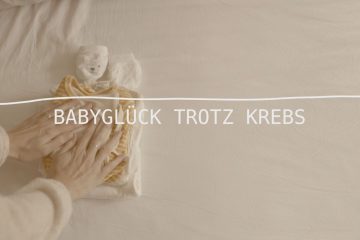

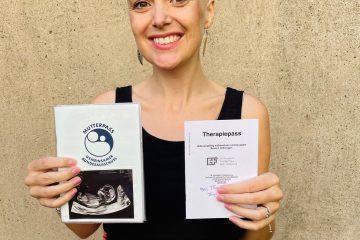
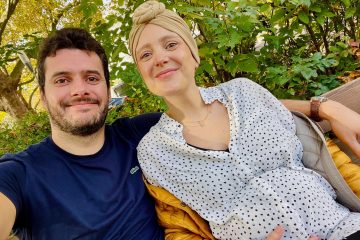
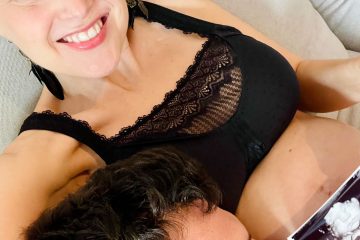
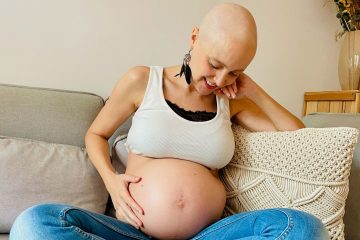
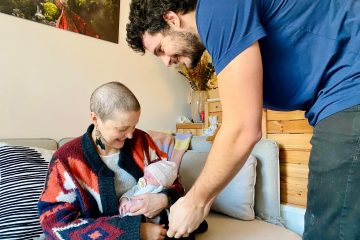
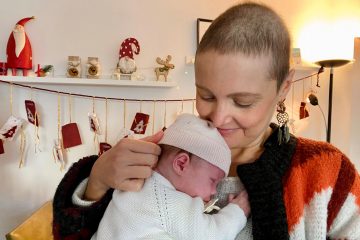
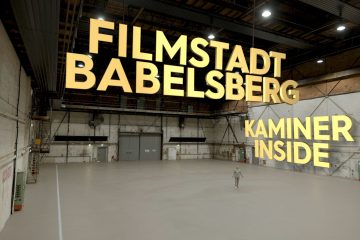
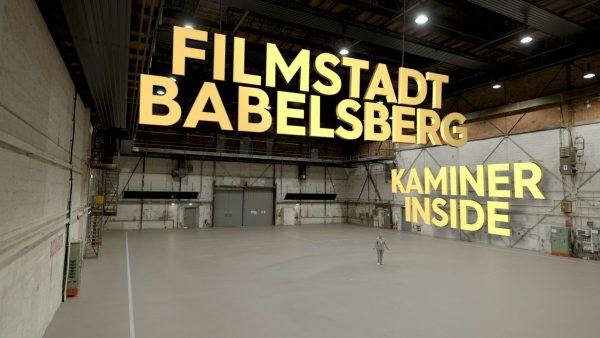
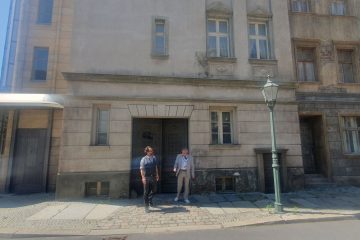
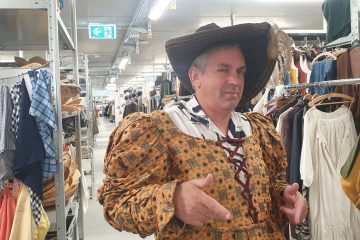
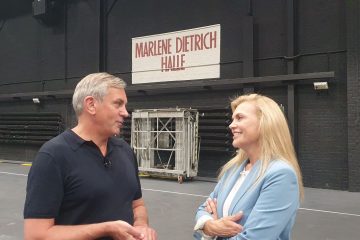
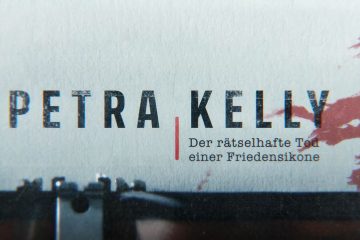
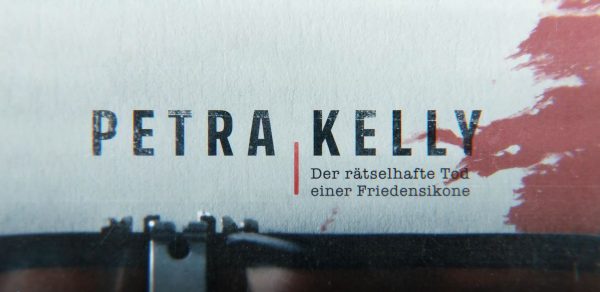
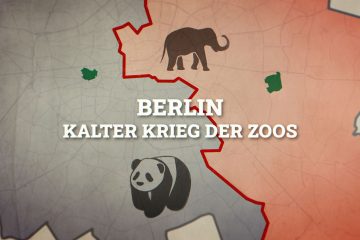
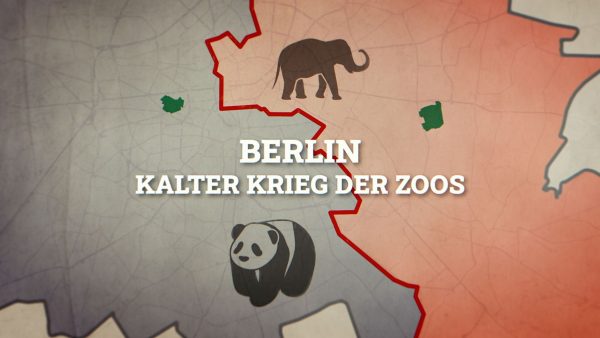
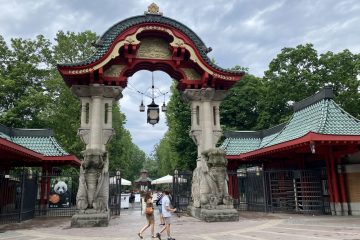
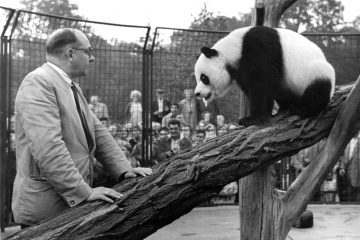
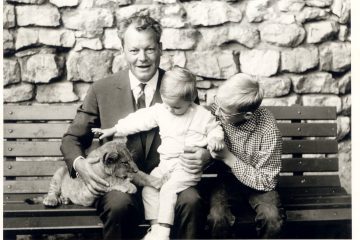
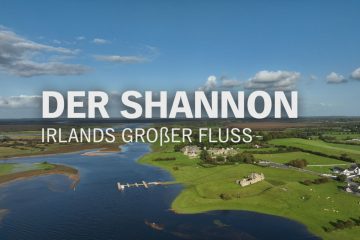
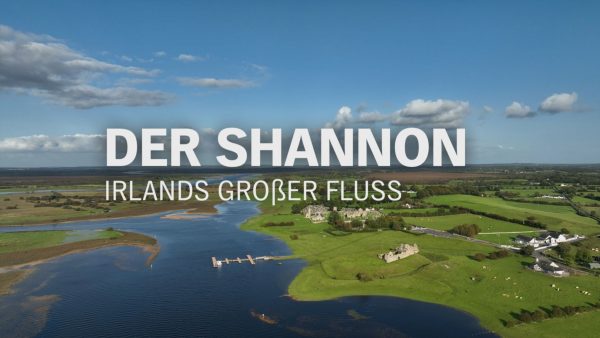

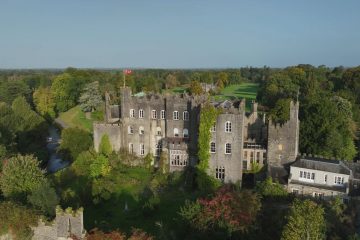
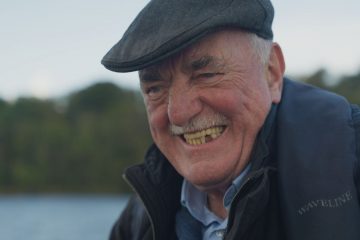
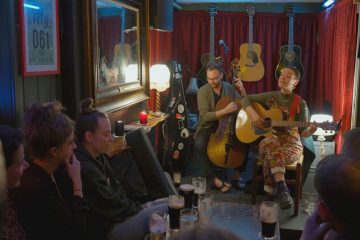
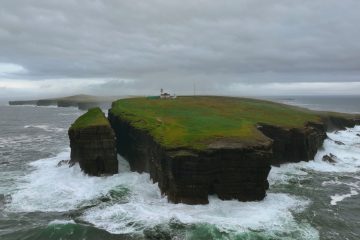
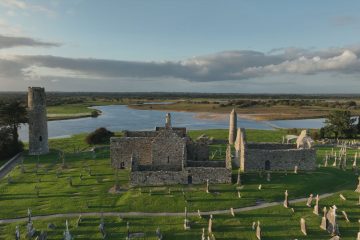
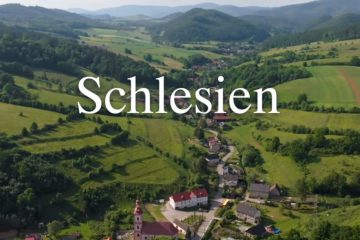
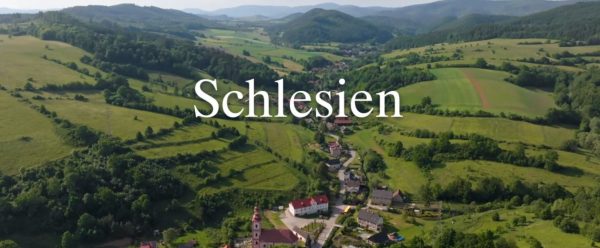
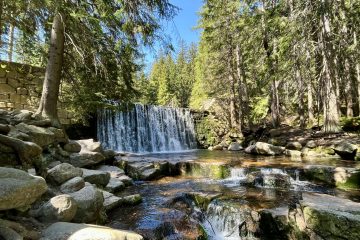
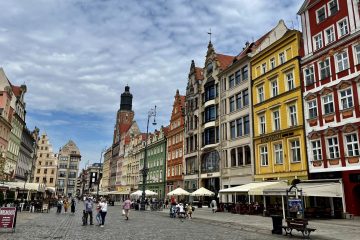
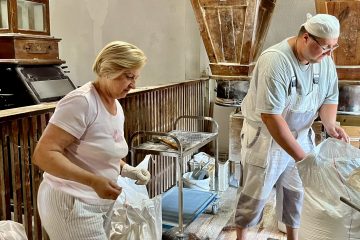
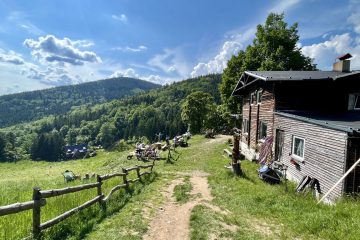
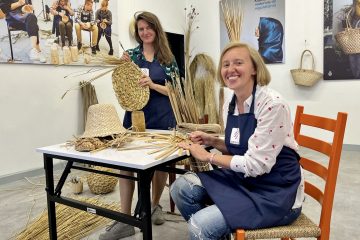
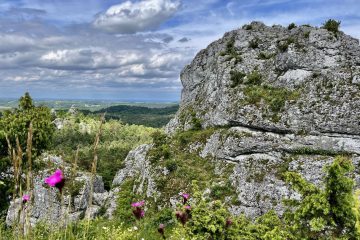
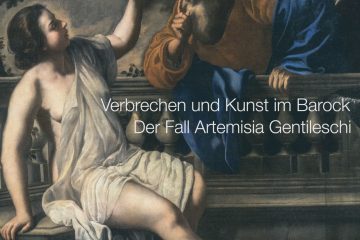
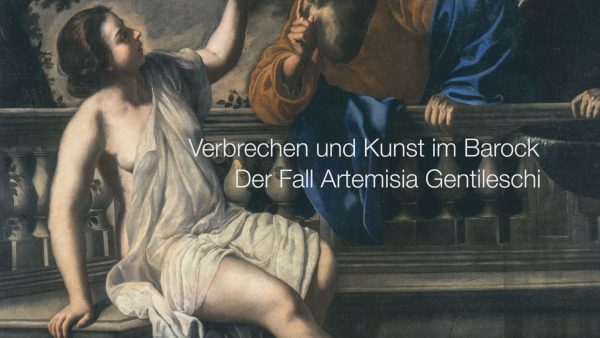
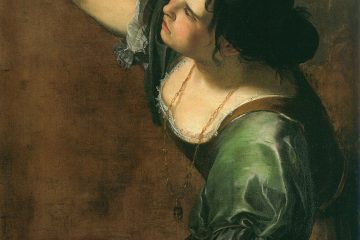
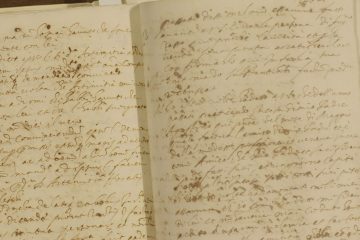
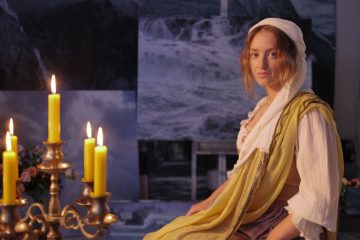
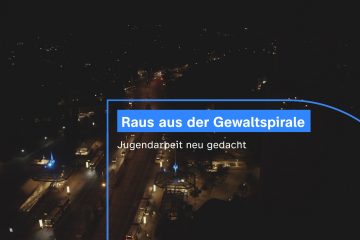
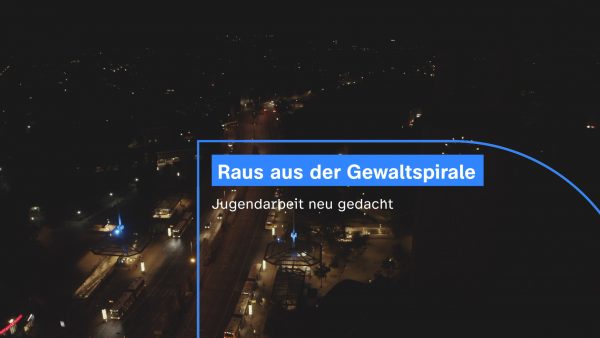
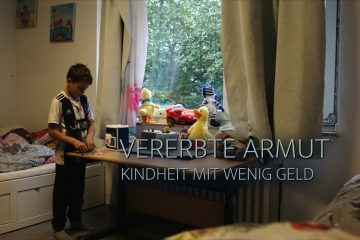
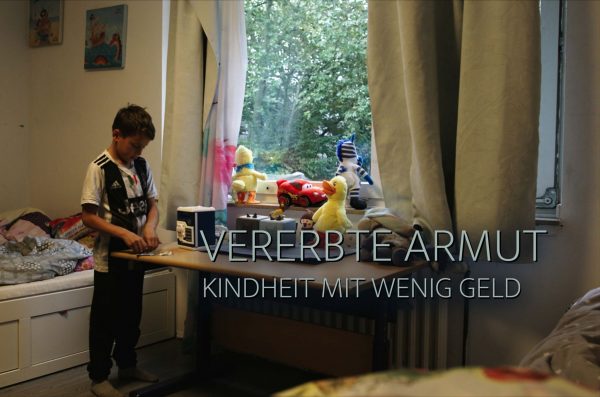
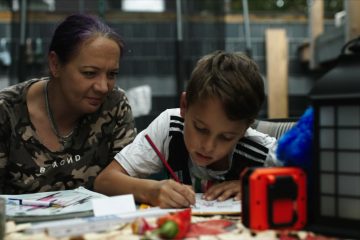
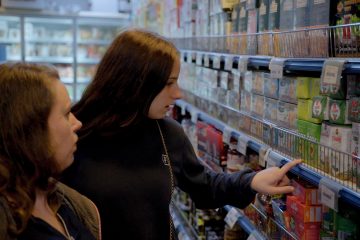
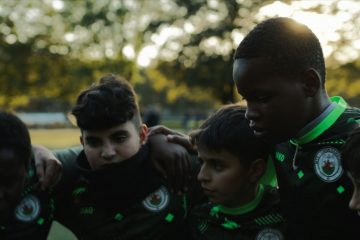
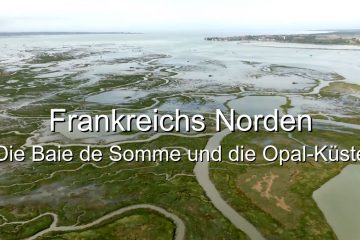
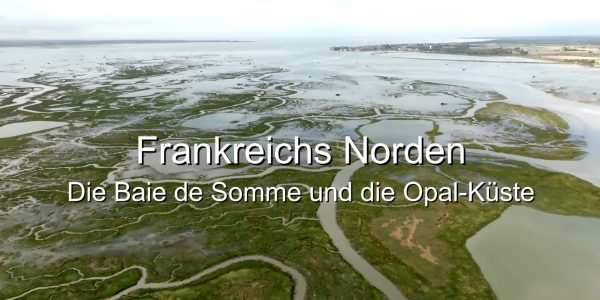
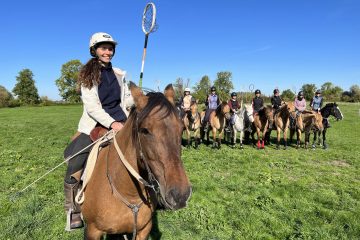
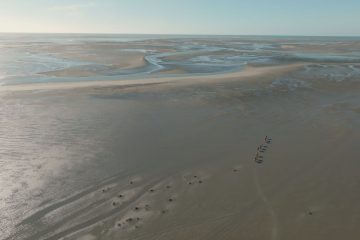
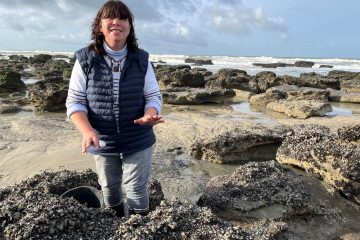
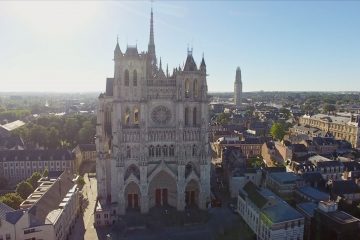
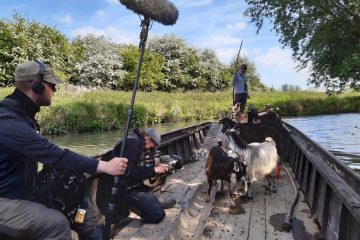
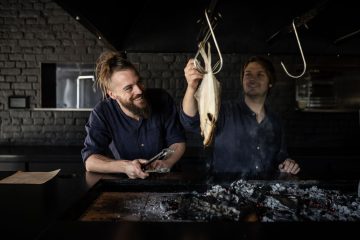
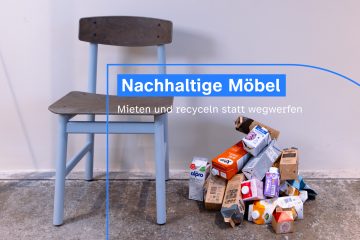
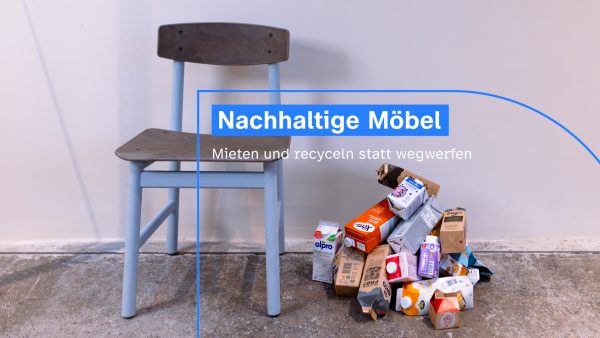
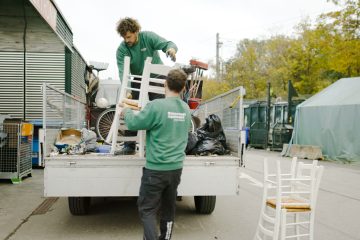
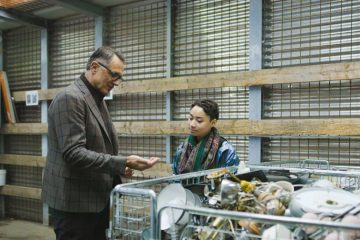
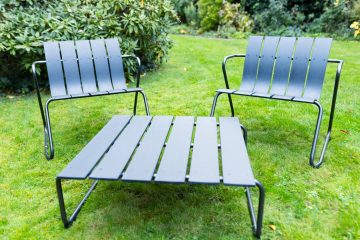
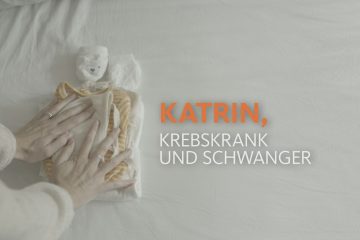
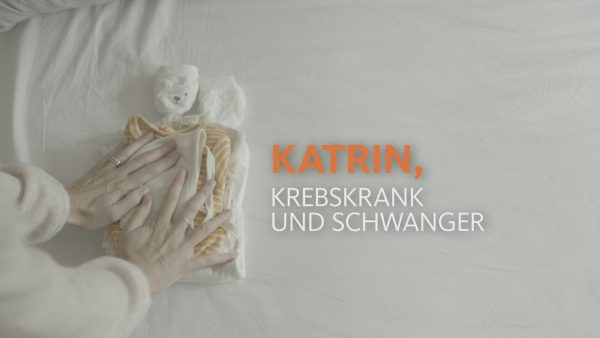
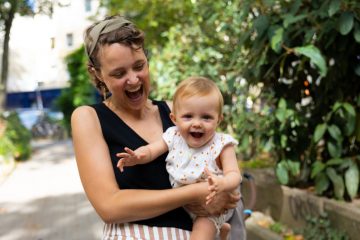
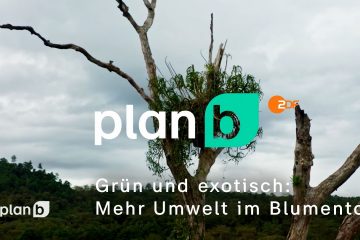
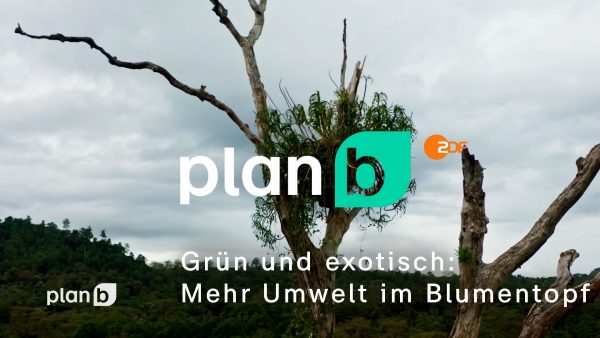
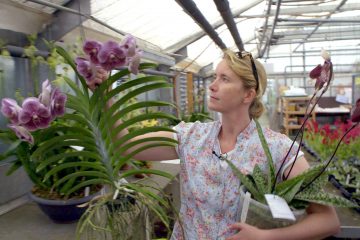
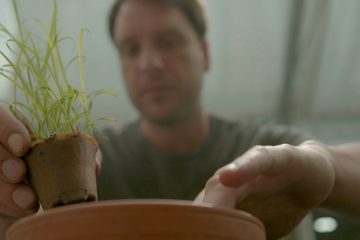
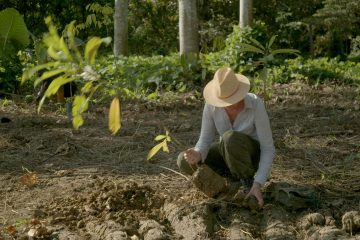
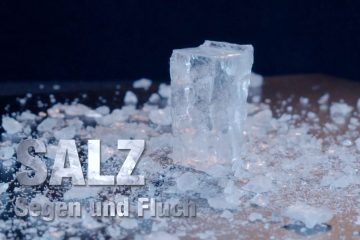
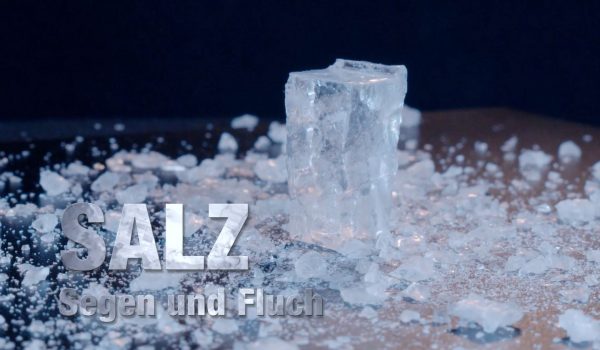
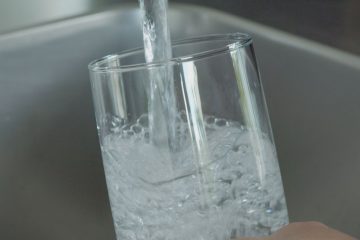

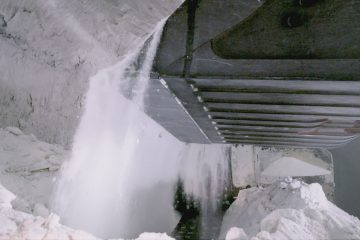
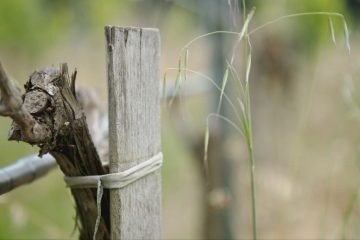
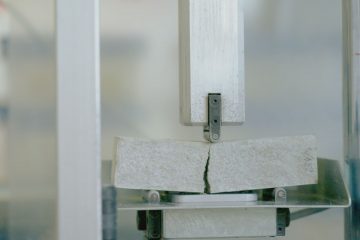
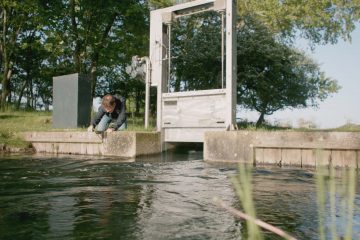
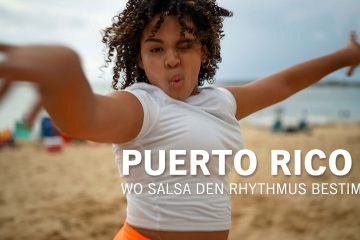
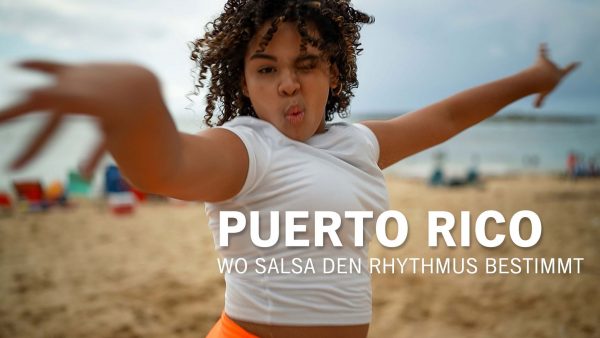
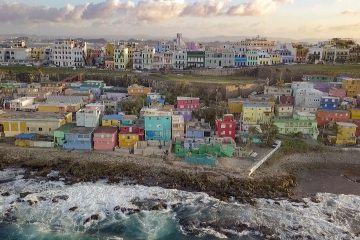
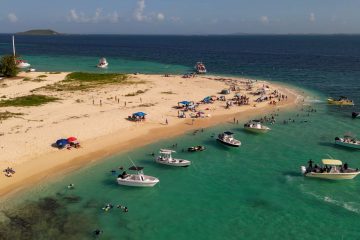
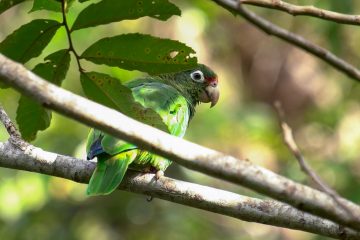
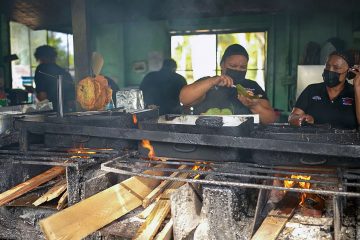
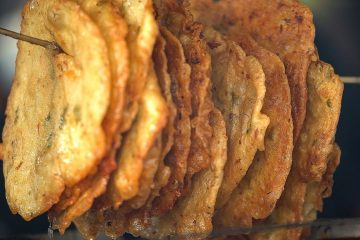
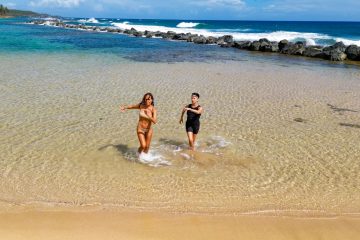
 Youtube
Youtube Instagram
Instagram